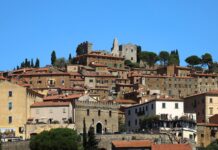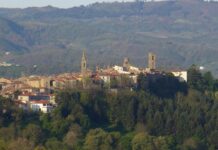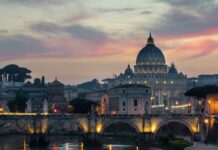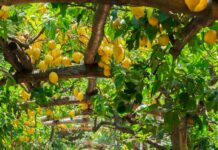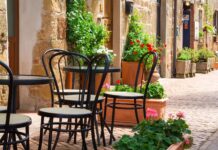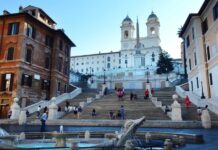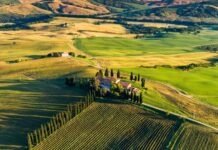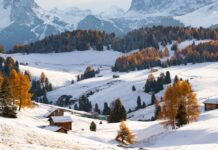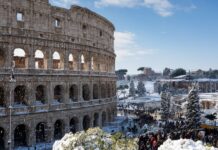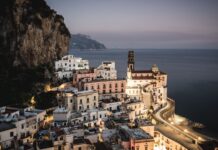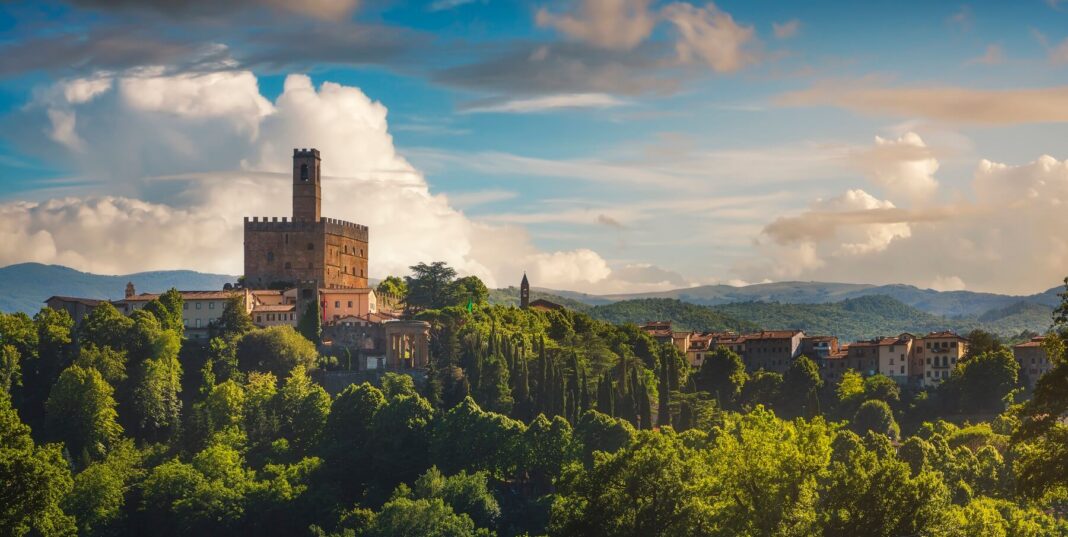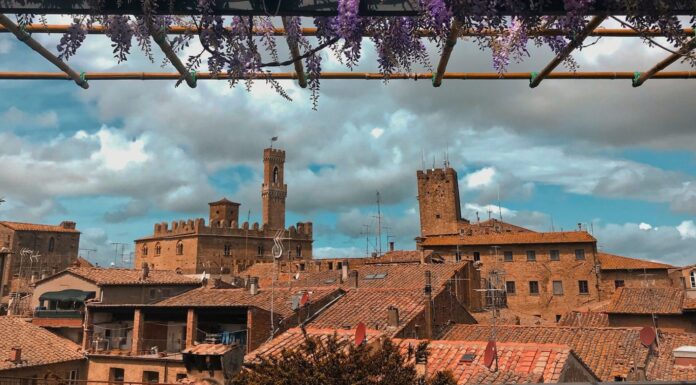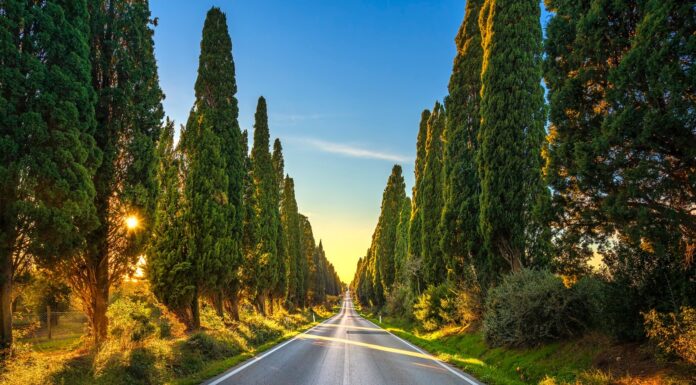Imagine stepping into a time machine and being transported to a thirteenth-century Tuscan village. That’s effectively what it feels like when stepping into the village of Poppi — minus the time machine! Poppi is a pocket-sized enclave of scattered hamlets that is perfect for visitors who are looking to whet their appetite of history and authentic Tuscan culture.
The town of Poppi is nestled within the National Park of the Casentinesi Forests, Monte Falterona and Campigna, set upon a hill surrounded by green mountains sprinkled with abbreviated plateaus of farmland that encircle its well-preserved centerpiece, the Castile of Conti Guidi. As you approach this medieval fortification, you will notice how it prevails over the skyline. From the vantage point of the castle, you’ll feast on a breath-taking view of the Cansentino Valley, all while being immersed in an ambiance of high-medieval antiquity.
You’d be surprised how filled to the brim this little village is! In this article, you’ll be provided with an overview of what there is to see and do in Poppi, including some logistical considerations to help you plan your trip.
Where is Poppi in Tuscany?
Poppi is an Italian town located in the Tuscany region of Italy. It is situated in the province of Arezzo, which is part of the administrative region of Tuscany. Poppi is known for its well-preserved medieval village, including the famous Count Guidi Castle, a significant tourist attraction. The town is nestled in the Tuscan hills, offering a picturesque landscape and a captivating historical and cultural atmosphere.
Read more: Airports in Tuscany – An Exhaustive Guide for a Smart Travel
5 Things to See in Poppi
This picturesque town, crowned by its famous castle, is a journey back in time, offering visitors a blend of art, architecture, and timeless Tuscan landscapes. Here are 5 things to see in Poppi that truly encapsulate the essence of this enchanting town:
1. Castello di Poppi dei Conti Guidi (The Poppi Castle)
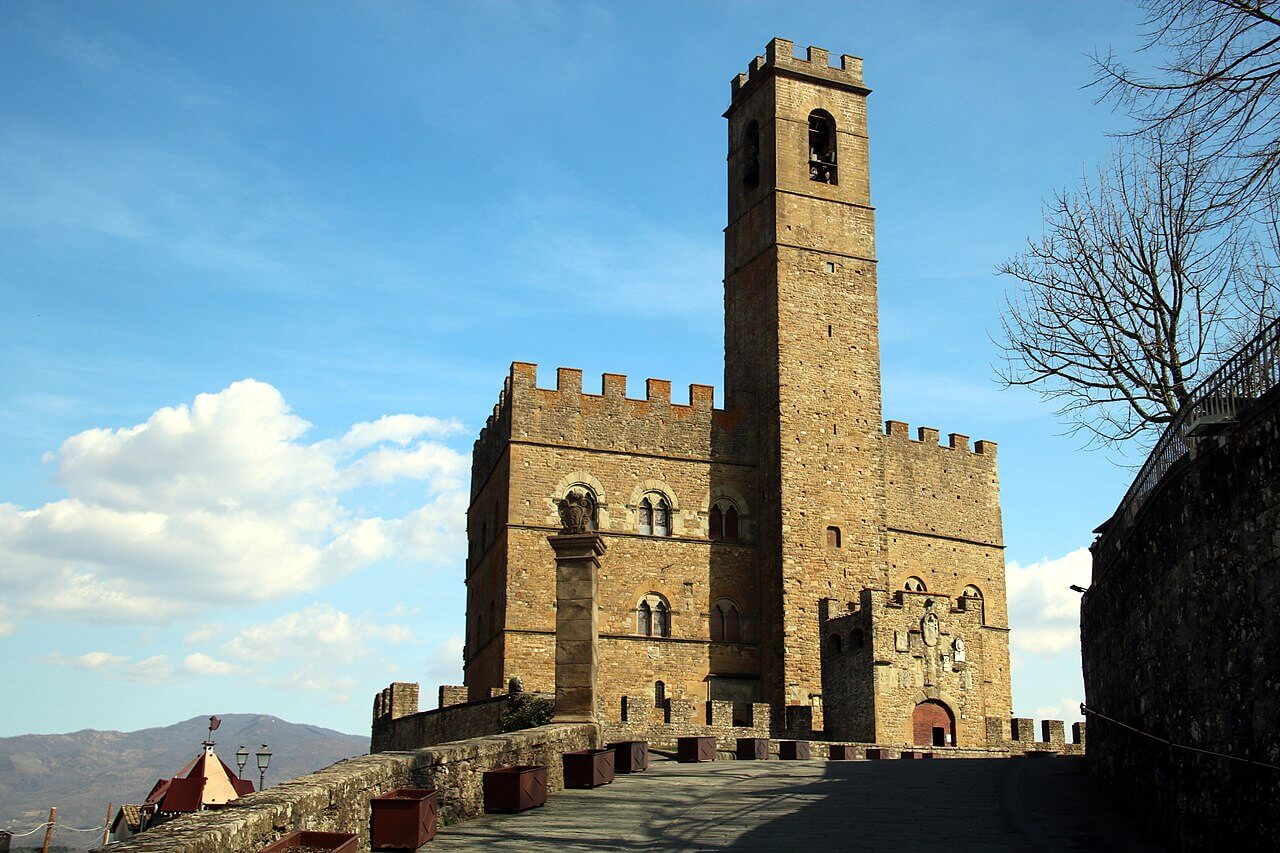
History
During the tenth century, the Poppi Castle was owned by a prominent aristocratic family from Tuscany, the Guidi family. The paternity of the building has yet to be determined by historians; however, they know what has transpired since its edification.
The battle of Campaldino, which was between Florence and Arezzo, took place on June 11th, 1289, just feet away from the castle. The conflict was essentially between two political parties, the pro-papal types and the pro-imperials. This was during Dante’s stay there, and word has it that he actually took part in the war.
Design
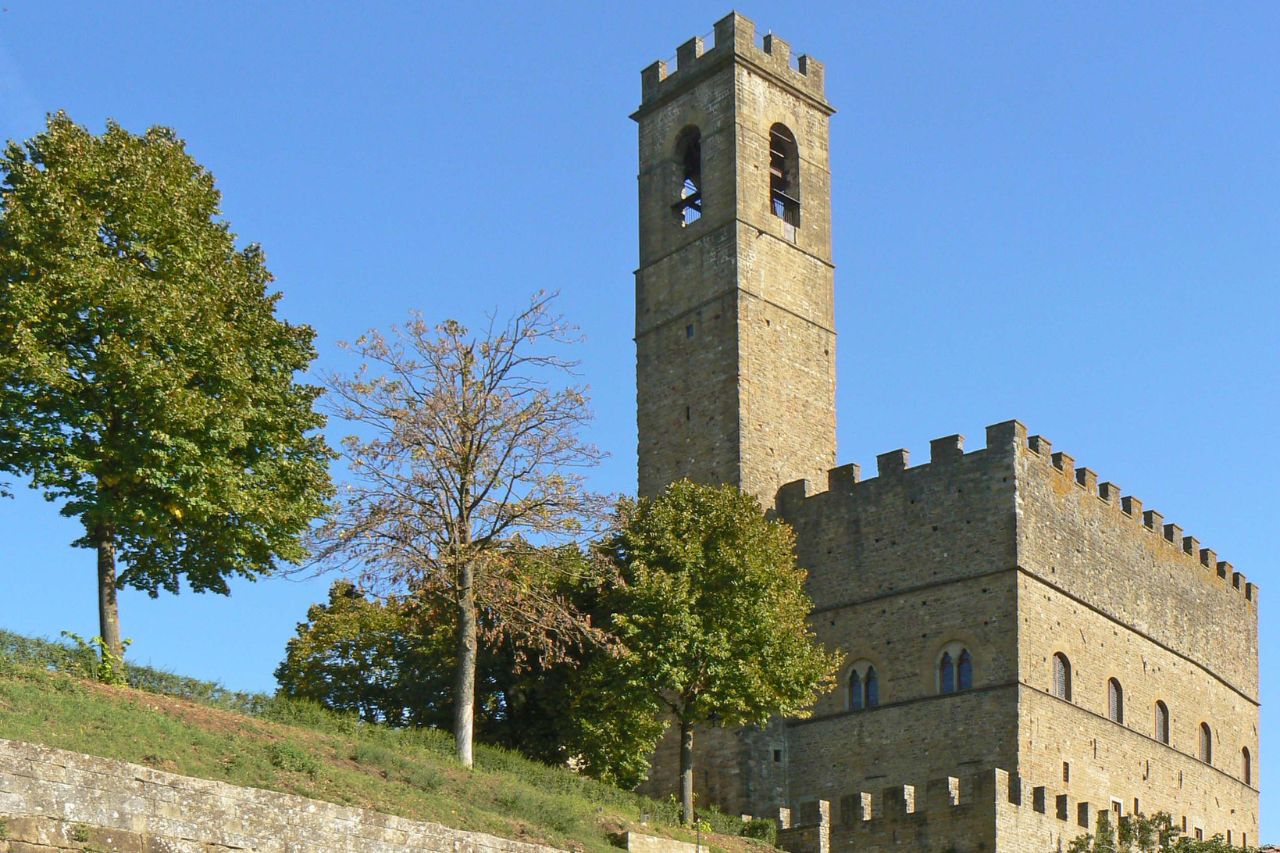
The Poppi Castle has a rectangular, elevated, thin tower, made more prominent by virtue of having been built on a hill. From the masonry on the outer and inner walls, to the immaculate stone staircases, to the inner courtyard, visitors are bound to be in awe.
There are elaborate displays of mosaic tiles covering entire walls in some of the inside spaces, parts of which have plenty of artwork such as the ascension of Christ. And on looking up, you can see the exposed wooden beams and planks on the various roofs. What is more, you get to view a collection of thousands and thousands of ancient books in its Biblioteca Rilliana.
Fun Fact
There’s a square in the front of the castle towards the left where you’ll find a bust of Dante Alighieri, the father of the Italian language, in honor of his work and his one-year stay at the castle during his exile from Florence, thanks to the graciousness of the Guidi family. It was there where Dante probably composed a portion of his Inferno, which is the first part of his epic poem, The Divine Comedy. The irony of Dante in Poppi is that years later, Florence, the very Republic that had expelled him, took over Poppi and added it under its dominion.
The Legend of the Devil’s Tower (Torre del Diavolo)
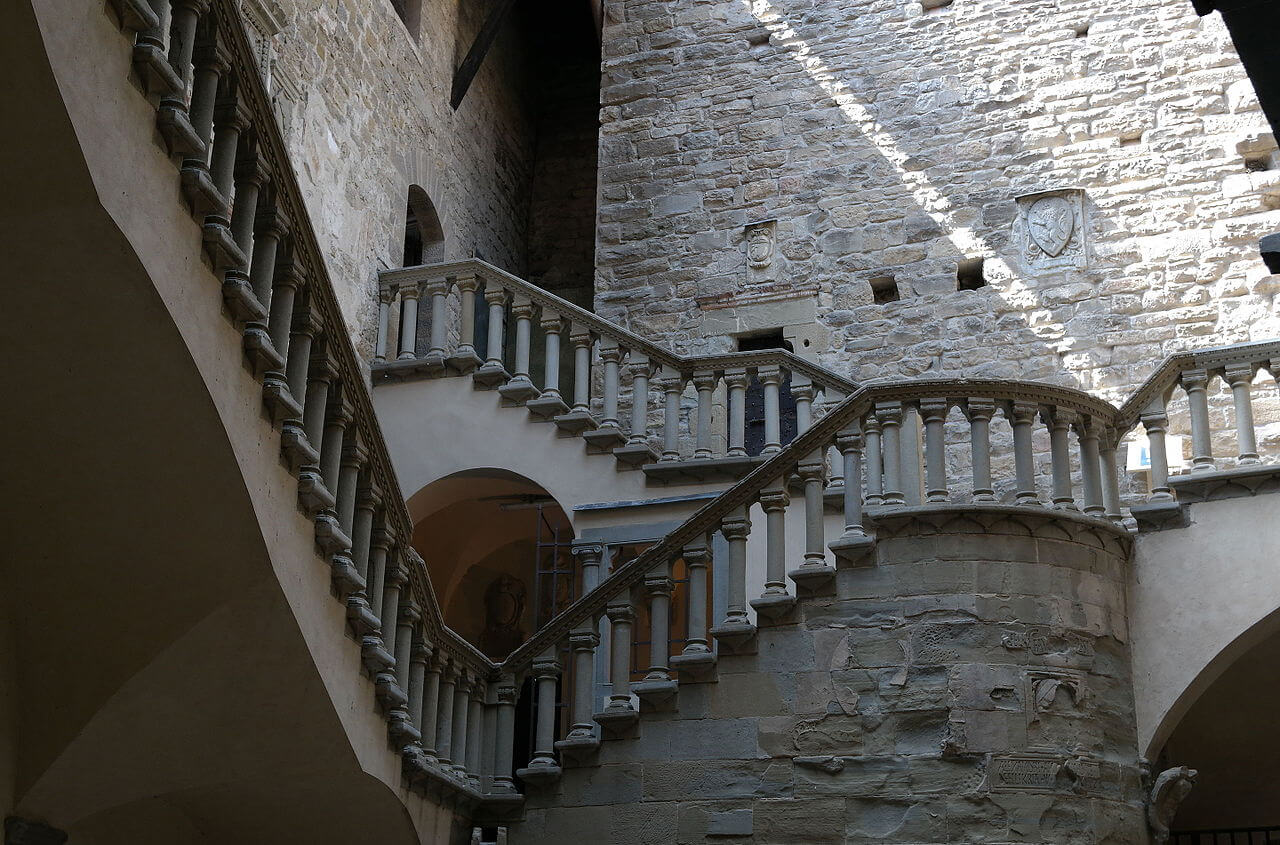
The story of Matilda is part of the village folklore, intriguing the minds of the locals. Many swear that they have seen her ghost at night.
The story goes as follows: Matilda’s marriage was arranged as a product of familial ties and convenience, not love (common in those days). What made matters worse was that she had an insatiable passion for making love.
During her husband’s many absences, she would take advantage and arrange a night of passion with a man of her choosing but she had to take quite a precautionary measure to ensure that her escapades were not divulged to the public. This measure consisted of executing her lovers right after their passionate acts by throwing them into a well equipped with sharp blades, guaranteeing their deaths.
After some time, the town began to notice a decrease in beautiful men of the village. Eventually, somehow, they collectively concluded that Matilda had been responsible for their deaths. The town then besieged the castle and walled her within its tower, after which she slowly died of thirst and hunger.
Legend has it that her ghost still roams the manor near the castle, looking for lovers to lure into bed.
Explore more: 15 Castles in Tuscany – An Enchanting World of Timeless Beauty
2. Abazzia di San Fedele

In keeping with the diminutive stature of Poppi, Abazzia di San Fedele is a boutique version of a grand cathedral, if you will, but it’s technically an Abbey— and it’s in beautiful condition.
Attached to the Monastery Abbey of San Fedele, this little chapel is composed of amazing stonework, a flush arrangement of big, small, and medium-sized gray rocks on the outside. On the inside, the stonework is more on the beige side and less rustic.
The patron Saint of Poppi, along with other pious figures, are buried underneath Abazzia di San Fedele. The monks pray there consistently. However, visitors can stop by to attend Mass in the outer section while enjoying the beauty of the architecture.
3. The Medieval Town
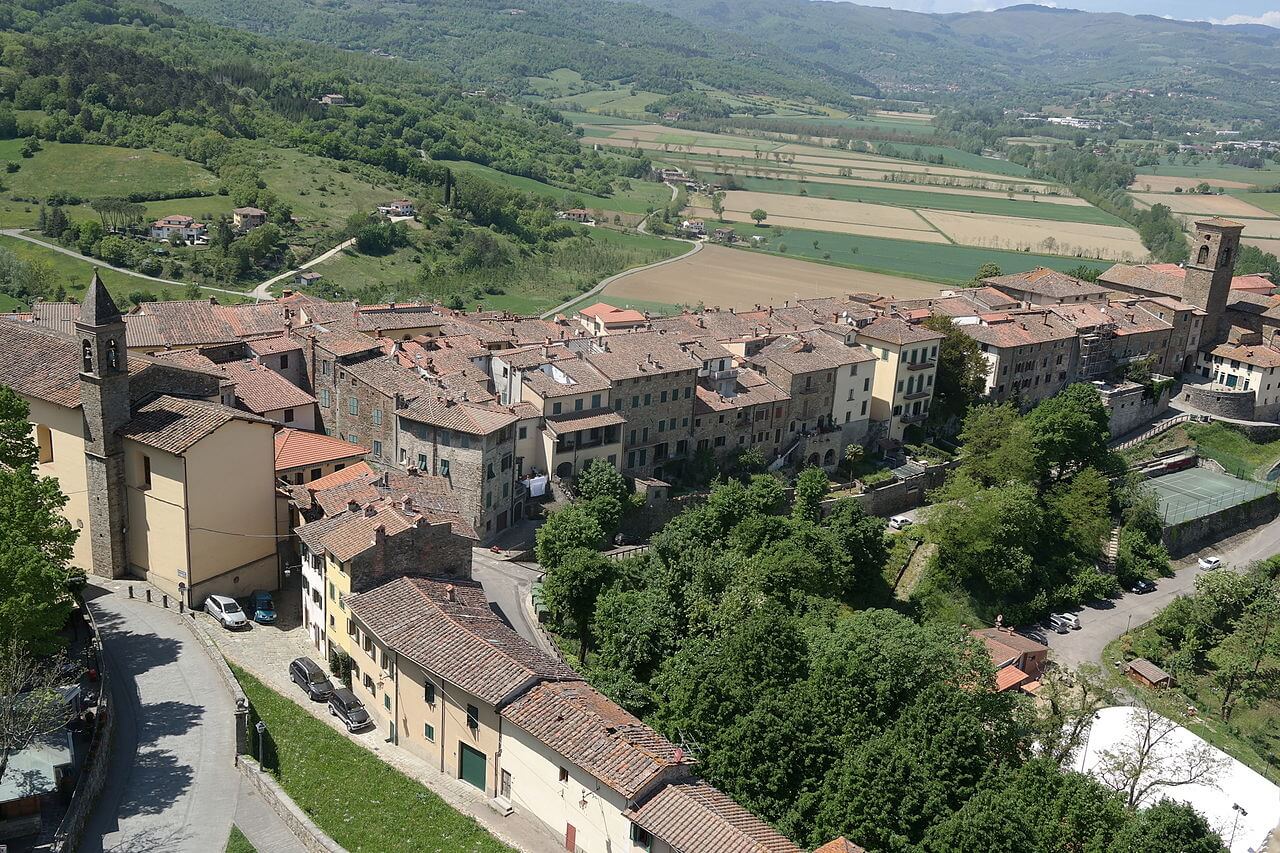
The town of Poppi is still surrounded by its protective walls, imbuing the town with a sense of being a Tuscan oasis. It is quaint, to say the least, and its narrow roads are the means of walking and viewing the past in the present. Each corner turned reveals charming old buildings, whose time-worn facades whisper tales of centuries gone by.
The town’s layout, a harmonious blend of historical integrity and lived-in warmth, invites exploration and discovery. From the meticulously preserved structures to the subtle details in the ironwork and stonemasonry, every aspect of Poppi’s medieval town is a tribute to the enduring beauty and resilience of Tuscan heritage.
4. Chiesa della Madonna del Morbo

In the heart of Poppi, in the evocative setting of Piazza Amerighi, stands the Chiesa della Madonna del Morbo. This captivating structure is an example of Baroque architecture. Constructed in the mid-16th century, this hexagonal church is distinguished by its striking domed roof. The architectural marvel immediately draws the eye, adding to the uniqueness of the structure. The church’s facade, with its intricate stonework and elegant proportions, reflects the artistic mastery of the Baroque era, inviting visitors to step inside and explore its richly decorated interior.
Upon entering, one is greeted by an array of artistic treasures; from the beautifully crafted altarpiece to the delicately painted frescoes that adorn the walls and ceiling, each element contributes to the church’s serene and sanctified atmosphere. The Chiesa della Madonna del Morbo is not just a place of worship; it is also a symbol of the town’s historical and cultural identity. This church embodies the deep spiritual connection and artistic heritage that Poppi has cherished for centuries.
5. Poppi Zoo
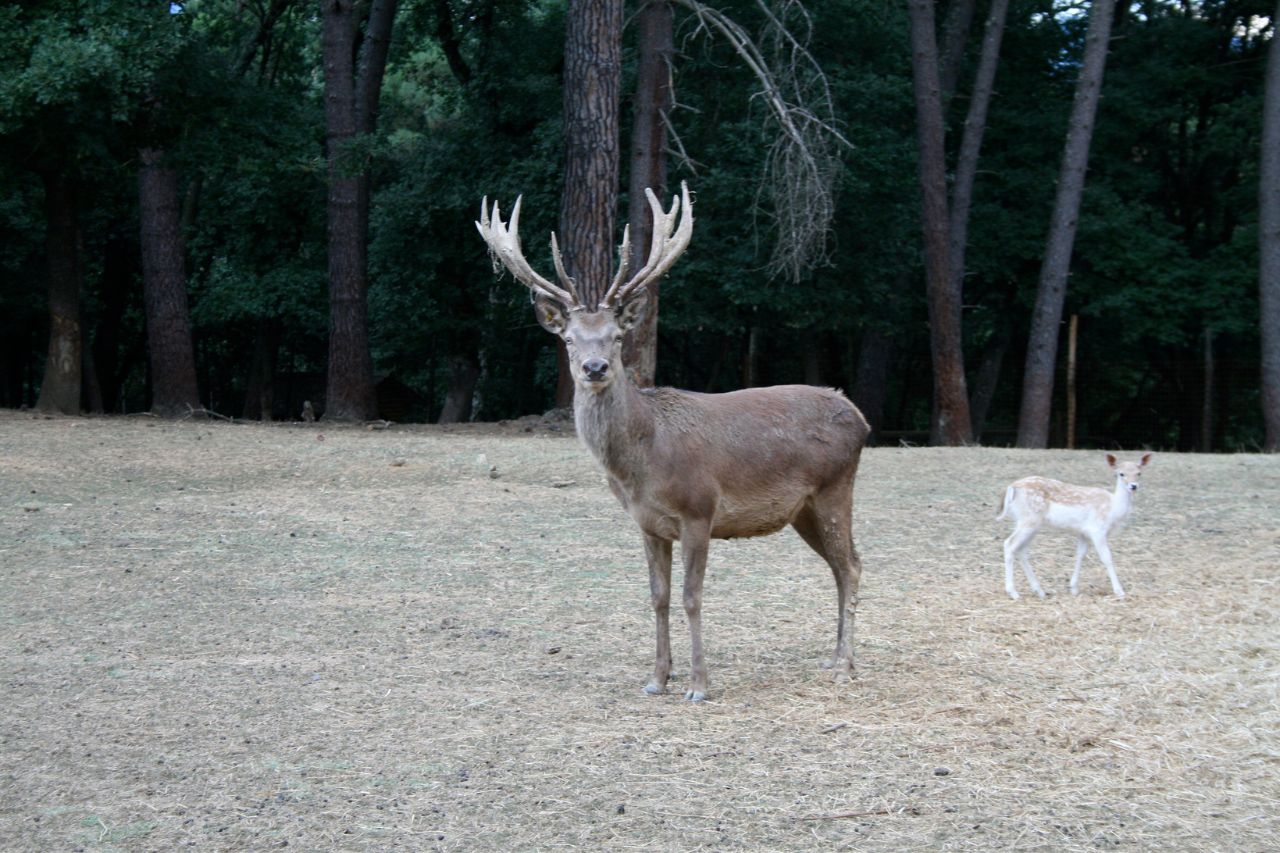
The Poppi Zoo, though modest in scale, stands out as a delightful destination for those interested in the local wildlife of Tuscany. It’s a place where visitors can gain a deeper understanding and appreciation of Poppi’s ecosystem. The zoo primarily showcases species that are indigenous to the region, offering a unique perspective on the native fauna.
This focus on local wildlife makes the zoo more than just an attraction; it becomes a window into the area’s natural heritage. The care taken in maintaining the habitats allows the animals to live comfortably, providing an educational and engaging experience for visitors. It’s an ideal spot for both families and wildlife enthusiasts to learn about and engage with the animals that are part of Poppi’s rich natural tapestry.
Explore more: Anghiari – Guide to a Picturesque Town in a Corner of Tuscany
Some suggested lodging in Poppi
In keeping with the quaint nature of this little town, places to stay in Poppi are generally boutique-like, and most of the suites keep loyal to their Tuscan designs while providing visitors with their warm Italian hospitality.
Below are some of the best places to stay in Poppi.
Poppi Suites
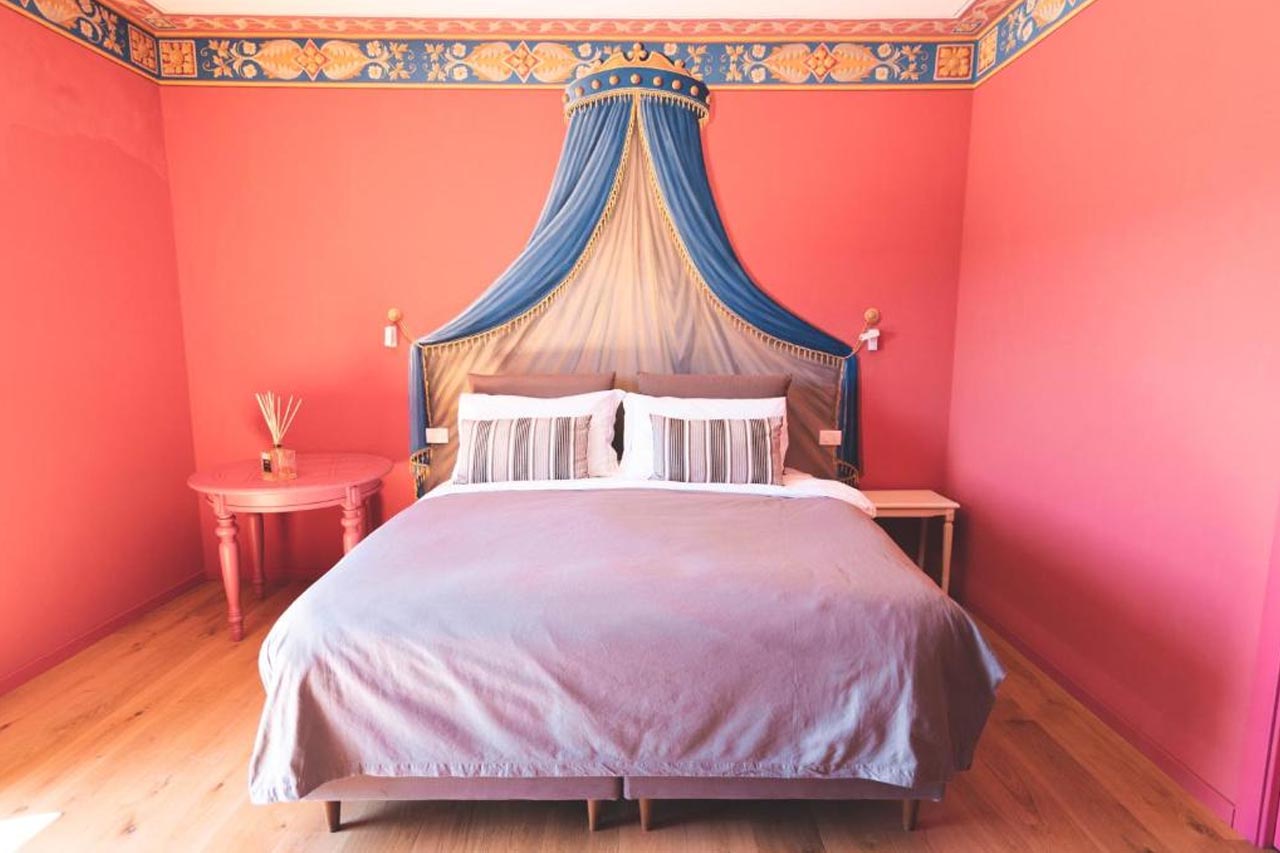
How does a hotel with a beautiful exterior and a simple interior with everything placed quaintly and at the convenience of its guests? There is also the convenience and delight of having access to the outside for your breakfast as well as the rooftop for lunch, and all near Poppi Castle?
La Torricella
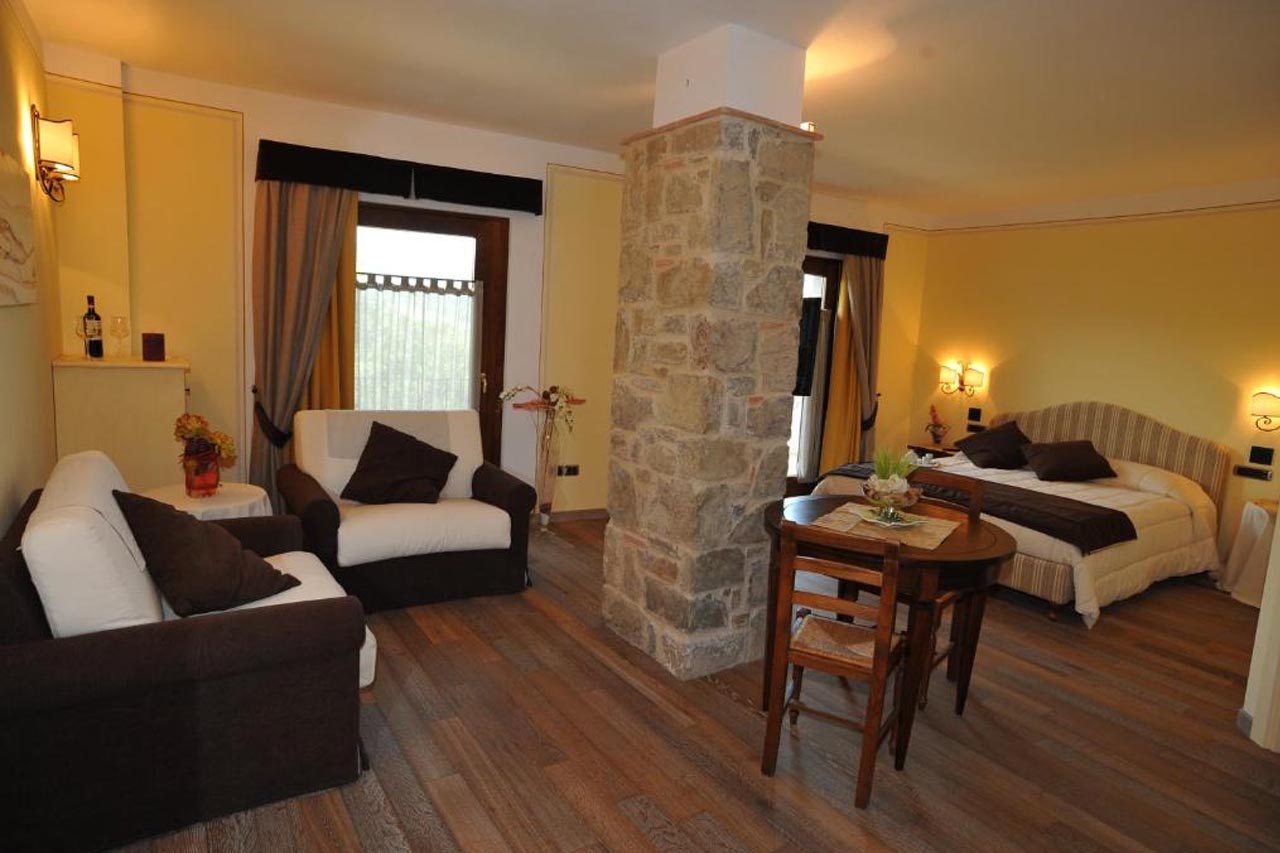
Or how about a hotel with a restaurant that has a veranda, surrounded by greenery? The inside of La Toricella has an elegant Tuscan interior, much of which has ceilings of exposed wooden beams and planks.
Podere Verdi Colline
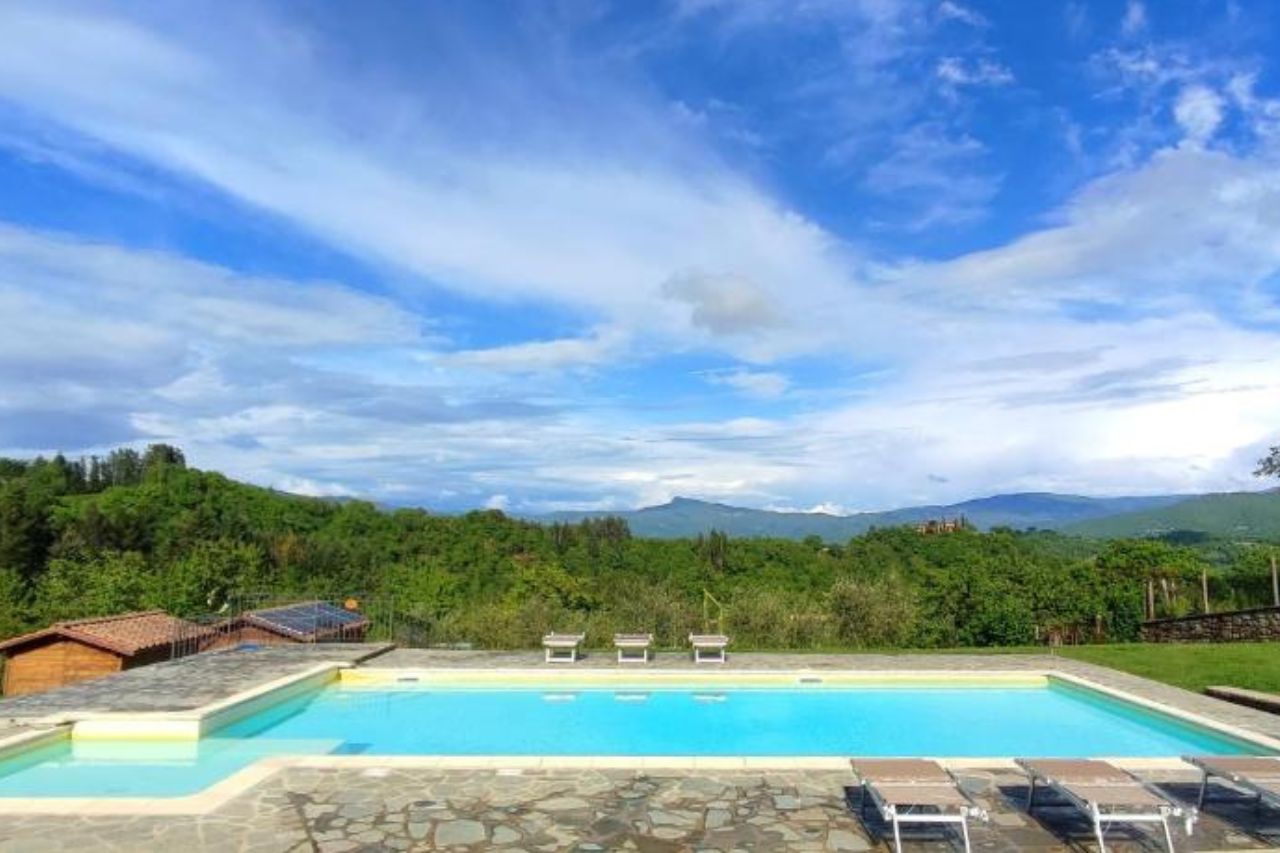
One of the more exclusive accommodations, Podere Verde Colline comprises three houses. By renting one of these, you’ll gain access to a beautiful yard, with a pool, and a kiosk for spending your evenings eating and drinking your favorite beverages. The Podere Verde Colline is encrusted within a backdrop of green trees and hills, effectively feeling like an escape from reality into a true piece of paradise.
Camping La Pineta
With open green fields and rows of ornate pine-like trees, this family-run camping site is an amazing experience for families and nature-lovers alike. Wooden cabins surround a large pool and it feels like a forested oasis within the Cansentino Valley.
What to Do and See around Poppi
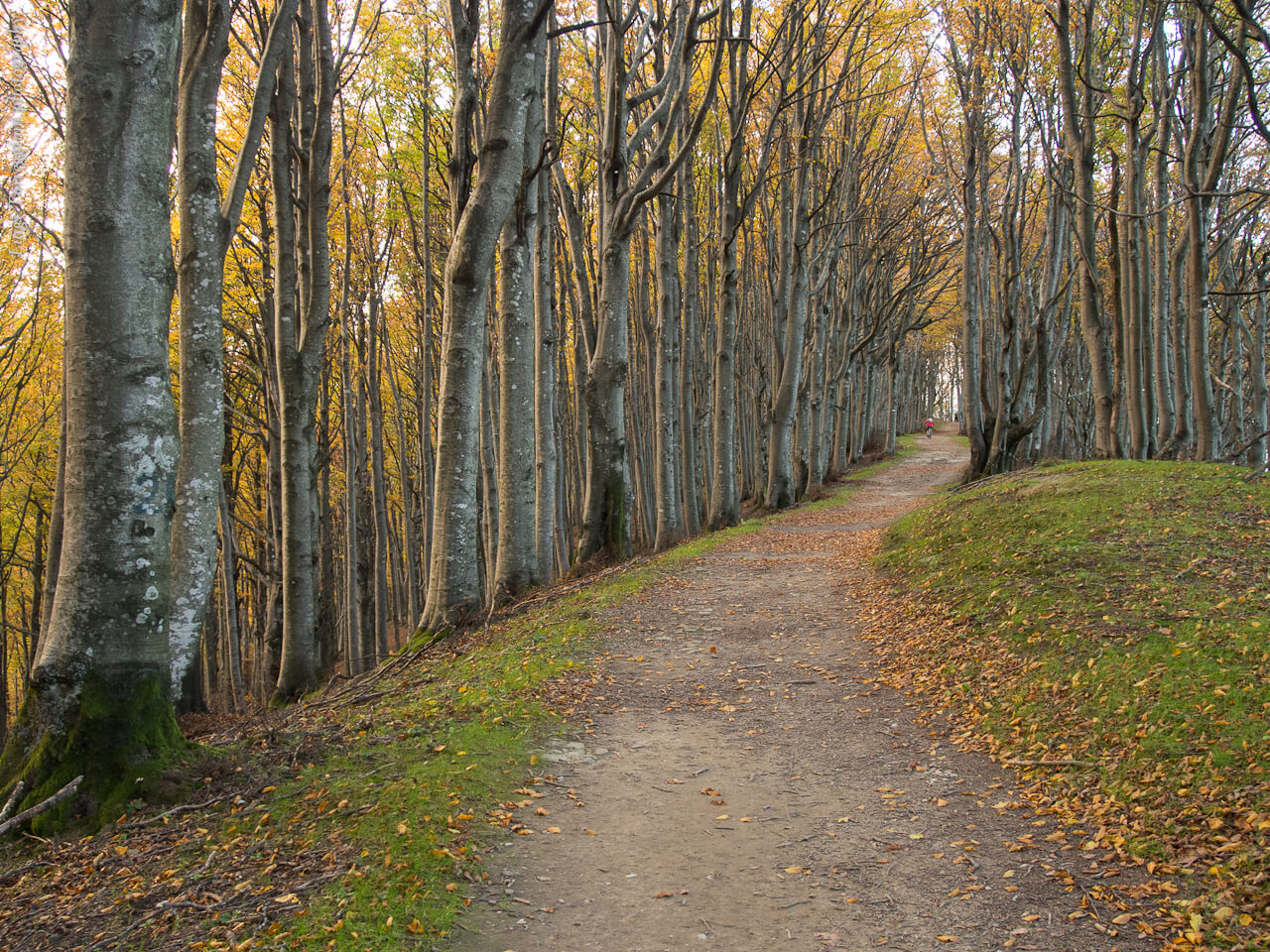
Hiking
The town of Poppi may be petite, but the Parco Nazionale delle Foreste Casentinesi, Monte Falterona e Campigna, Pratovecchio (in other words, the park!) where it is located is 142.1 square miles. With its network of over 372 miles of trails, its rugged terrain has a variety of options. Some of the activities to take advantage of are:
- Walking trails
- Nature trails are focused on the observation of your surroundings and its natural elements. Along the way, there are certain observation points that provide you with valuable information about what you’re witnessing.
- Guided Walks for those who want to be led and informed by local professionals.
- Hiking trails to travel from “shelter to shelter” during a three-day expedition.
- Bicycling is fun and easy with routes especially suited for it.
Explore more: Cortona, Italy – A Picturesque Tuscan Town
Camaldoli Hermitage

The Camaldoli Hermitage is located within the National Park of the Casentino Forest. As its name suggests, it is a secluded, remote place. It’s where monks have resided since around the year 1046.
This ancient complex consists of a hospice, a church, and, of course, the monastery. The monastery carries various old paintings, most notably seven-panel paintings by Giorgio Vasari.
The Sanctuary of La Verna
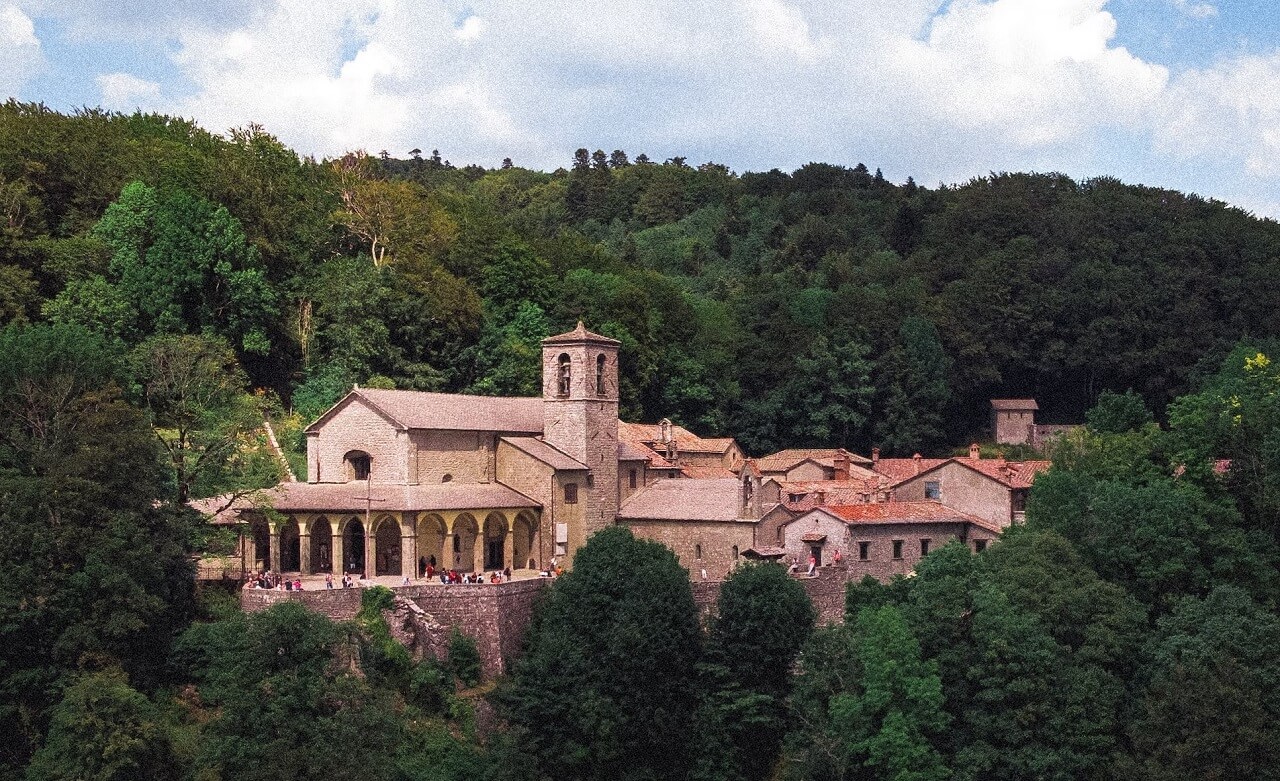
Also within the Casentino forest, the Sanctuary of La Verna is one of the most important spiritual destinations ever since medieval times, primarily due to the fact that the Franciscan saint, Francis of Assisi, received his stigmata in September of 1224.
The Sanctuary of La Verna is also a symbol of the radical change that Europe had undergone in adopting Christianity as its official religion, as the Sanctuary was built directly upon a pagan worship site dedicated to the goddess Laverna (hence its name). In concert with its historical and spiritual importance, the surrounding nature imbues it with a deep primordial connection to the universe. This mountainous, forested area, holds the Sanctuary of La Verna high upon a cliff, the face of which has a breathtaking view of valleys and other mountains.
Some important historical sites to visit include:
- The convent
- Quadrant
- Chapel of Santa Maria degli Angeli
- Basilica Major
- Corridor of the Stigmata.
Bibbiena
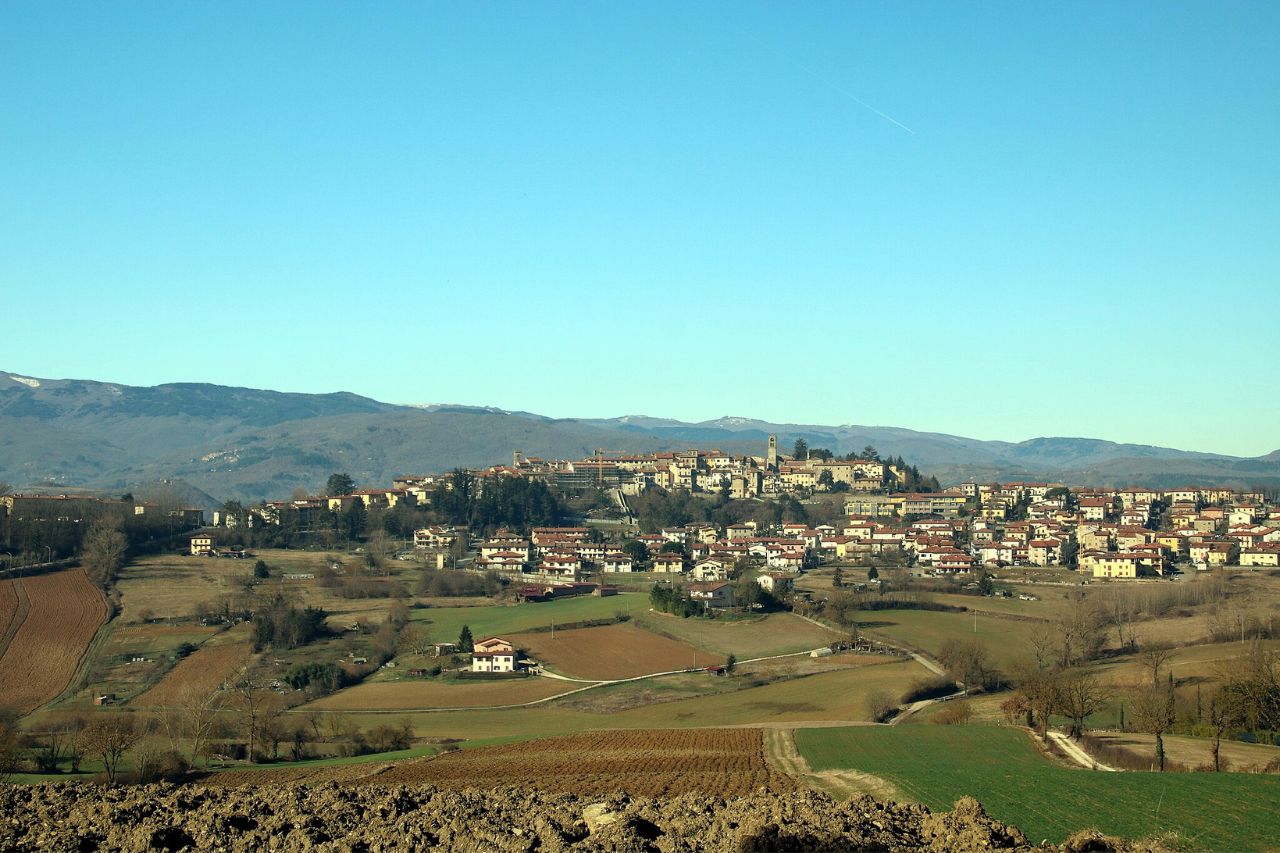
Being the largest town in the Cansentino valley, with approximately 12,000 inhabitants, Bibbiena is also perched atop a hill. It’s distinct enough from Poppi, yet only about a ten-minute car ride away.
There are twenty-one hamlets to explore. There are also a number of important historical sites to discover, namely:
- Palazzo Mazzoleni
- Palazzo Dovizi
- Palazzo Nicolini
- The Church of San Lorenzo
- The Pieve di Sant’ ippolito
- The Sanctuary of Santa Maria del Sasso
- The Rococo Oratorio of San Francesco.
How to get to Poppi
Getting to Poppi is part of the adventure, with various options available to suit different travel preferences and starting points. Whether you’re arriving by car, public transportation, or air, here’s how you can make your way to this picturesque destination:
- By Car: Poppi is a remote village, but it is quite accessible. Since there is no airport in Arezzo, consider the closest one, Florence, which is just under an hour and a half away by car. Poppi is about two hours from San Marino, which is on the east side of the Italian peninsula.
- Public Transportation: If you prefer public transportation, you can catch a bus or train from Florence. However, we still recommended a rental car, as public transportation takes much more time. If you are coming from San Marino, avoid public transportation altogether because you would spend half your day in getting to Poppi, so definitely travel by car.
- By Air: There are several airports near Poppi. Florence, again, is the closest. There is also Forli, Bologna, and Pisa, in ascending order of distance.
Wrap Up: Is Poppi Worth Visiting?
In conclusion, Poppi is undoubtedly a destination worth visiting for anyone seeking to immerse themselves in the charm of Tuscany. With its rich medieval history and beautifully preserved architecture, the town provides a unique and enriching experience. From the imposing castle to the intimate Poppi Zoo, a blend of cultural attractions awaits visitors. The ease of access, whether by car or public transport, makes it a convenient escape. Visitors can enter a world where history and natural beauty coexist harmoniously. Poppi is not just a place to visit; it’s a journey back in time, a serene retreat that promises both relaxation and discovery in the heart of Italy.


